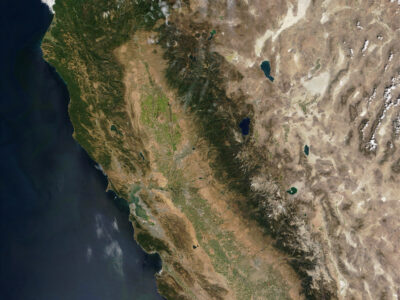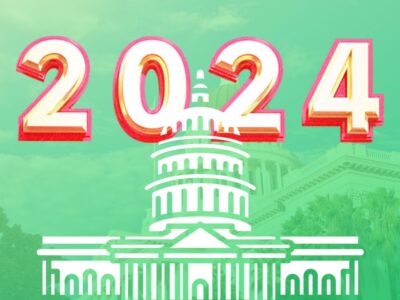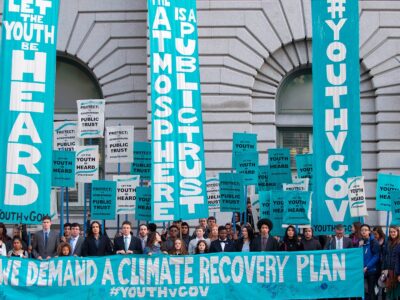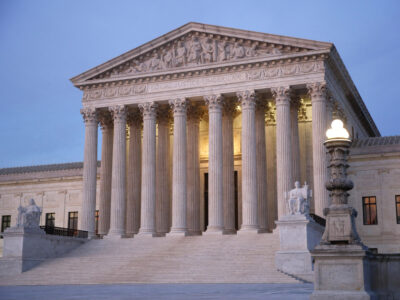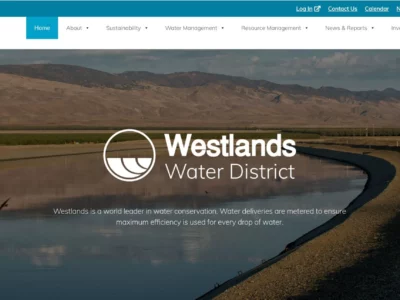General
We Crossed 1.5 C. Did We Breach the Paris Agreement?
Here’s what the recent rise in global temperature means for international climate targets.
If you’re not a climate scientist—and maybe even if you are—reading news headlines this month has been confounding and a little scary. “In First, Earth’s Temperature Breached Key Threshold Over a 12 Month Period” is how the Wall Street Journal put it. “Earth Just Experienced 12 Months Of Global Temperatures Above Critical 1.5C Climate Threshold,” …
Continue reading “We Crossed 1.5 C. Did We Breach the Paris Agreement?”
CONTINUE READINGEvaluating Voluntary Agreements in the Bay-Delta Watershed
by Nell Green Nylen, Felicia Marcus, Dave Owen, and Michael Kiparsky
Updates to flow and other regulatory requirements for California’s Bay-Delta watershed are long overdue. For much of the last 12 years, state political leadership has prioritized efforts to develop voluntary agreements (VAs) with water users over completing updates to the watershed’s water quality standards. Now the State Water Resources Control Board has restarted the regulatory …
Continue reading “Evaluating Voluntary Agreements in the Bay-Delta Watershed”
CONTINUE READING7 Reasons California Should Get Tougher on Methane from Dairies
California lawmakers should rethink the role of dairy digesters in the state’s dairy and livestock mitigation strategy.
Even though California aims to decrease the emissions of methane, dairy operations are rewarded for creating, and capturing, more and more of the planet-warming super pollutant in the form of manure-derived biogas. Today, California lawmakers declined to correct that perverse incentive, but they still have opportunities to rethink the state’s embrace of digesters as its …
Continue reading “7 Reasons California Should Get Tougher on Methane from Dairies”
CONTINUE READINGClimate Justice, Climate Finance and Pragmatism for Tropical Jurisdictions at COP28
Exploring the urgency of subnational climate action: insights from COP28 on financing tropical forest conservation, indigenous empowerment, and sustainable livelihoods by the Governors’ Climate and Forests Task Force network.
The Governors’ Climate and Forests Task Force (GCF Task Force) engaged in the 28th Conference of the Parties (COP28) to the United Nations Framework Convention on Climate Change (UNFCCC) held in Dubai, marking a pivotal moment in the global climate dialogue. This significant international forum serves as a crucial platform where nations, subnational entities, and …
CONTINUE READINGThe Year Ahead in California Climate Laws
Facing a $37.9 billion deficit, California’s 2024 legislative session is likely to be about minor fixes, cleanup bills, and the ballot box. Plus: Will 2023’s disclosure bills get funded?
Though I do not have a crystal ball — wish I did! — there are some clear markers we can evaluate to foresee environmental priorities, and possibilities, as we start another exciting year in the California Legislature. The California Legislature kicked off the 2024 session on January 3 with notable changes in leadership. Robert Rivas, who …
Continue reading “The Year Ahead in California Climate Laws”
CONTINUE READINGJudicial Activism and Climate Change: An Unhealthy Combination
The trial judge in the Juliana case won’t give up, no matter what higher courts say..
An Oregon federal judge has convinced herself that climate change is a constitutional issue. After what promises to be a lengthy trial, Judge Aiken plans to decide whether U.S. energy policy passes constitutional muster. While I have no doubts about her sincerity and good intentions, her opinion itself shows why her courtroom is not the …
Continue reading “Judicial Activism and Climate Change: An Unhealthy Combination”
CONTINUE READINGElection 2024: Climate Action vs. Radical Deregulation
Voters should consider the radical, right-wing deregulation agenda that would await on Day One of a second Trump administration.
The Iowa Caucuses are 12 days away. The South Carolina Republican Primary comes 5 weeks later. And just two weeks after that is Super Tuesday. In the lead up to all these primary contests, anti-democracy candidate Donald Trump continues to march toward capturing the GOP nomination with a commanding lead in national polls. While headlines …
Continue reading “Election 2024: Climate Action vs. Radical Deregulation”
CONTINUE READINGThe U.S. Supreme Court & Environmental Law in 2024
Numerous Key Environmental Issues and Doctrines Will Confront the Justices This Year
As we begin 2024, it’s useful to identify and assess the many environmental issues that the U.S. Supreme Court has agreed to decide this year. It seems likely that the conservative majority of the justices will erode or, perhaps, dramatically jettison longstanding principles of environmental law and policy in the coming months. Summarized below are …
Continue reading “The U.S. Supreme Court & Environmental Law in 2024”
CONTINUE READINGCalifornia Courts Foil Westlands Water District’s Grinch-Like Water Grab
Westlands’ Efforts to Permanently Privatize California Water Opposed by Unique Coalition & Rejected by Skeptical Judges
While there’s a great deal that’s dysfunctional and downright wrong about water law and policy in California, occasionally there are positive developments to report. So it’s most satisfying to end 2023 with some good news regarding water in the Golden State. This is the saga of how the Westlands Water District tried to privatize a …
Continue reading “California Courts Foil Westlands Water District’s Grinch-Like Water Grab”
CONTINUE READINGA Big Year on Legal Planet
Here are the 12 most popular topics in environmental law and climate policy on Legal Planet based on our most-read posts from 2023.
It’s an understatement to say that 2023 was a transformative year for the U.S. climate movement. We saw rapid implementation of landmark federal climate laws, a series of big actions on methane emissions, a deal on Colorado River water usage, and bigger-than-expected climate victories in Sacramento. EPA’s control of toxic chemicals was tested, the U.S. …
Continue reading “A Big Year on Legal Planet”
CONTINUE READING




